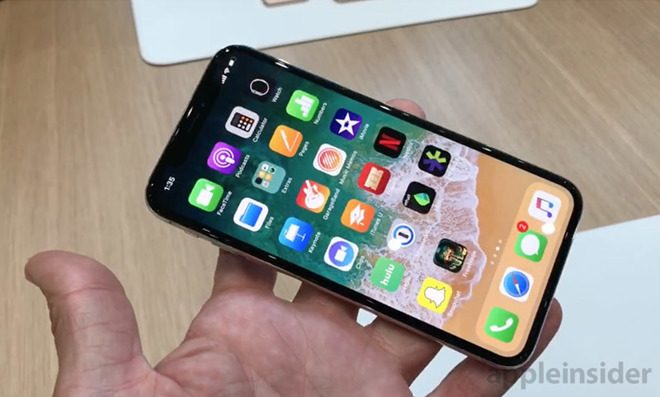Apple's follow-up to the iPhone X will cost less to produce than the current model, a report claims, with the next-generation smartphone thought to have a manufacturing bill of materials more than 10 percent lower, despite expectations that it will have upgraded specifications.
Analyst Luke Lin of Digitimes Research claims a 5.85-inch OLED iPhone believed to be arriving this fall as part of the iPhone line's yearly update will be far lower than the existing MBOM for the iPhone X, which he claims was more than $400 when it launched last year. Effectively this suggests the unannounced smartphone will cost Apple at least $40 less to produce than the iPhone X at launch.
Lin's claimed cost of production is considerably higher than the amount speculated in a teardown and analysis of installed components performed in November shortly after its release. At the time, the 64-gigabyte iPhone X was said to cost approximately $357.50 to produce, including the cost of labor for the final assembly of the device.
According to Lin's supply chain study, Apple has managed to reach an agreement with Samsung Display to secure "satisfactory terms" for OLED display panels that will prevent the cost rising. Samsung Display was allegedly in a better negotiating position for the deal due to Apple supposedly ordering fewer OLED panels than it previously committed to buying for the iPhone X.
Another Digitimes report from Monday claimed Taiwan's display panel industry is anticipating orders for approximately 110 to 130 million OLED panels destined for the iPhone X and other future iPhones in 2018, and ordering between 250 and 270 million display panels overall across the year.
For other components, Lin does not describe what measures are being taken by component vendors to make the device cheaper to produce, instead calling them a "cost reduction."
Lin does agree with speculation that there will be three iPhone devices shipping this fall, with a 5.85-inch OLED device joined by a 6.45-inch model and a 6.1-inch LCD version. It is suggested that the cost savings could make the model with the smaller OLED panel the cheapest of the three at retail.
It is alleged some "recent engineering samples" for the model in question have "adopted components with lower-level specifications or lower capacities" than the 6.1-inch LCD variant, including reduced memory, helping Lin's claim it will be the value proposition of the trio.
 Malcolm Owen
Malcolm Owen







-m.jpg)






 Marko Zivkovic
Marko Zivkovic
 Mike Wuerthele
Mike Wuerthele
 Christine McKee
Christine McKee
 Amber Neely
Amber Neely
 Sponsored Content
Sponsored Content
 Wesley Hilliard
Wesley Hilliard

 William Gallagher
William Gallagher









16 Comments
And will it cost 10% less to buy? Probably not.
Component costs go down every year for commodity parts such as display screens and memory. Therefore older iPhone models (such as SE, 7 and 7+) are less costly to produce with each passing year. This article simply says that the same will happen to the 2017 iPhone X. In addition, the iPhone X will drop in price because Face ID will no longer be new and supply constrained.
Once they get the price down a bit and offer a larger screen it will sell a lot better.
The 6.1" LCD device was originally rumored by Ming to be $650 - $750. That was revised up to the $700 - $800 range later. Assuming the article is correct and the 5.8" OLED device is the lowest cost I don't think those rumors can be reconciled. Even if Apple reduces the iPhone X2 retail price by 10% that would still be $900.
A more likely Fall lineup is the 6.1" LCD device for $750, a 5.8" OLED for $900, and a 6.4" OLED for $1,050. I just don't see any way to flip the price points of the 5.8" and 6.1" devices and have it be competitive.